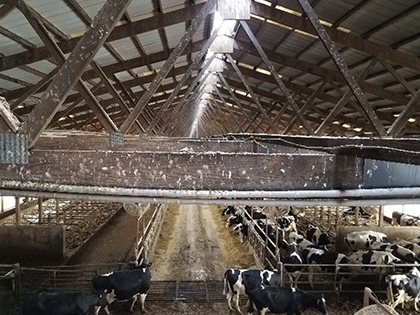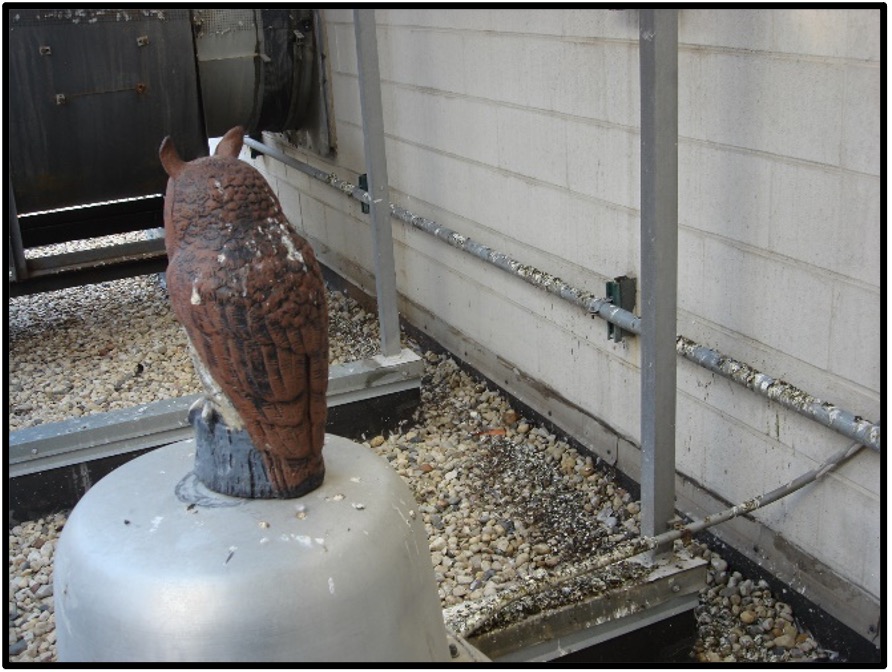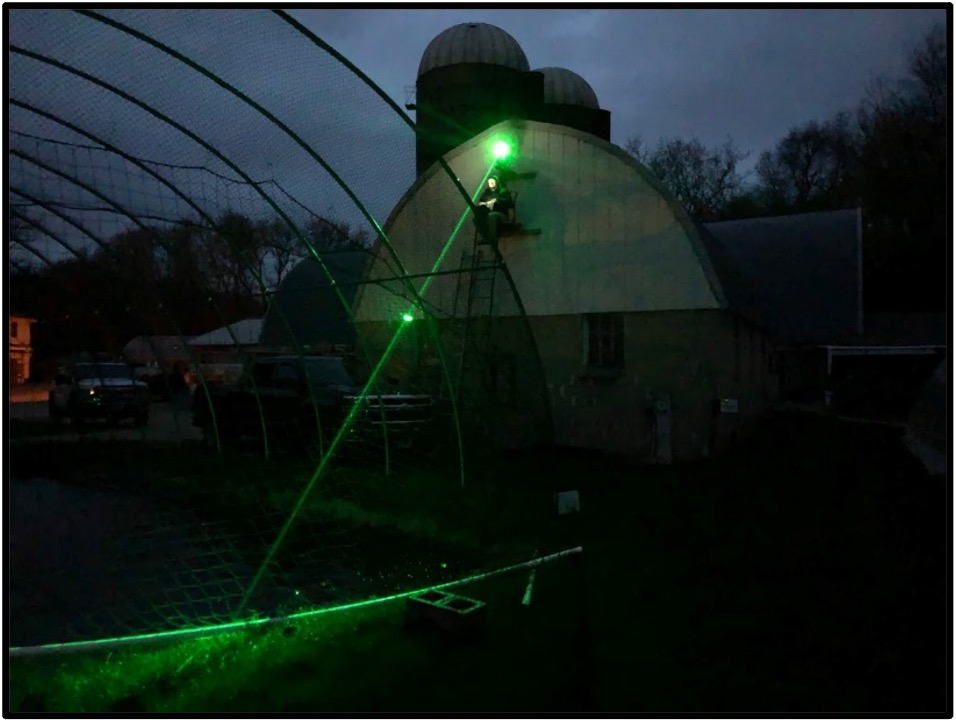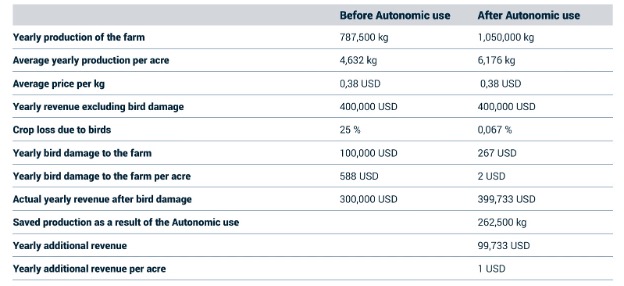Bird Alleviation Innovations in Agriculture: How to Get the Flock Out
Jul 27, 2021
For as long as humans have tended crops and raised livestock, birds have taken advantage of our success.
While some birds have been beneficial by eating pests, many have become pests themselves by eating the crops and spreading illness. Historically in the U.S., children were tasked with chasing birds out of crops while the Egyptians and Greeks developed scarecrows, painting them in bright colors and arming them with clubs.
While times and technology have changed, the problems birds create for agricultural industries have not. Annual losses of fruits, vegetables, grains, and nuts to birds that include blackbirds, robins, starlings, and grackles reach hundreds of millions of dollars. Herons, cormorants, and eagles decimate food and sport fish aquaculture and introduce parasites and diseases into the rearing ponds. Starlings descend upon dairy and meat cattle farms, eating hundreds of millions of dollars’ worth of livestock feed and spreading diseases like salmonella. Waterfowl carry and transmit diseases like avian flu to poultry resulting in millions of chickens, turkeys, and ducks being culled to protect human health and prevent disease transmission, with losses that reach billions of dollars.
There’s also the risk of novel diseases like the new Mystery Disease impacting songbirds in the East and Midwest. While these losses are devastating for farmers, they also hit the average person in the form of rising food prices.
| Industry | Issue | Annual Loss |
|---|---|---|
| Dairy | Consumption and contamination of feed and water | Avg. $55 per cow |
| Fruit | Consumption and contamination of crops | Up to 40% of crop losses |
| Grain | Consumption and contamination of crops | Sweet Corn: 16% Rice: $13 million |
| Aquaculture | Consumption of fish and introduction of parasites | 50-95% of fingerling fish in open rearing ponds |
| Poultry | Introduction of viruses to flocks (avian flu and VND) | $3.3 billion for 2014/15 outbreak. |
Best Strategies for Protecting Against Agricultural Losses to Birds
Mitigating bird damage in agriculture is not as easy as just spraying a pesticide. Native birds are protected and, in most cases, it is unlawful to poison or kill them without a permit. Even though non-native, invasive birds like house sparrows, pigeons, and European starlings can be killed, birds often flock with other species, making it nearly impossible to cull the invasive birds without harm to protected native species. Birds are also incredibly intelligent and adapt quickly to attempts to keep them away from crops and feed.
Integrated Pest Management (IPM) programs for birds using both traditional and new technologies have had great success at minimizing losses, however. Qualified bird management companies with experts in agricultural mitigation are an excellent investment in protecting farm livelihoods and increasing profits.
When used by themselves, traditional scare methods like noisemakers, scarecrows, and decoys only work for a short period of time before the birds realize that they pose no real danger and ignore them. Structural exclusion products like netting, while often very effective, can be overwhelming and time consuming, especially if you have to net off large orchards or berry patches. Other structural deterrents like bird spikes and shock track can be a good option to deter perching but are useless if damage is occurring in the fields. Predator harassment using trained dogs and abatement falcons can be effective, but is often very costly. With no single solution effective at solving pest bird issues, losses are seen as inevitable, but as they begin to mount, so does the frustration.

Decoys like this owl work only for a short time before birds get accustomed and ignore them.
Innovation in the Fight Against Bird Conflicts on the Farm
While pest birds are a well-defended adversary, humans are nothing if not resilient and innovative. One recent addition to agriculture’s bird management arsenal is fully programmable autonomic lasers: a state-of-the-art technology that has become a game changer for many farms. While certain tools and techniques are species specific, these lasers work 24 across all bird species and can be easily adapted to work in almost any agriculture industry, especially fruit, dairy, poultry, sweet corn, and aquaculture.
They are effective: birds see differently than we do and a moving laser beam seems like a dangerous threat. Lasers also require little investment in time and effort: while not entirely “set it and forget it” each laser is programmed to run continuously with little maintenance. They work inside and outside, in barns and fields. Because they are programmed to move in a random pattern, birds do not become acclimated to them. They remain a persistent and unpredictable threat. And while there are upfront costs to purchase and install, farmers often see a return on investment within one year with the reductions in losses due to birds. Best of all, they are a humane choice and do no harm to the birds, making this a safe option for protected native species and invasive species alike. While not a silver bullet for all bird issues, autonomic and handheld lasers can be a worthwhile tool in agriculture’s pest management toolbox.

While most effective at night, autonomic laser keeps birds away from crops and feed 24/7.

One blueberry farmer increased revenue by nearly a third when adding autonomic lasers to his IPM plan.
We share our planet with these intelligent descendants of the dinosaurs and they have consistently adapted and kept us on our toes. As long as humans grow healthy and delicious food, birds will try to get their share. Staying one step ahead of them to safeguard our food supply requires continuous innovation to work through pest bird issues in an integrated manner. At Wild Good Chase, we have deep expertise in providing safe, humane and cost-effective solutions to your bird conflicts. Give us a call or click on the link below to get started with an assessment.
Contact us to learn more about our agricultural bird management


 0
0
